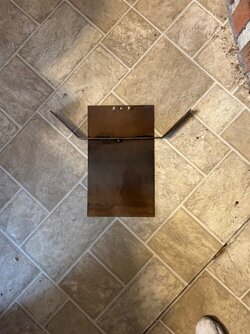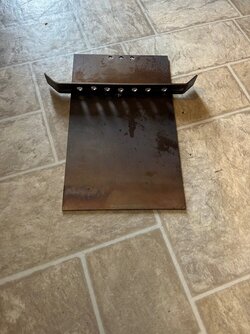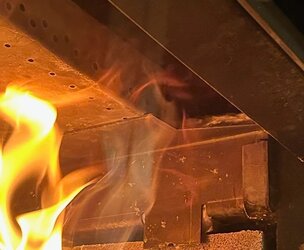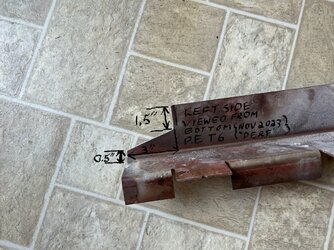Ok, Update on 2022 T6 flame shield modification to mitigate smoke spillage into room when door opened with a hot stove and active fire. As I had surmised, the new design flame shield is quite an obstruction to flow. When i removed the baffle assembly there was 1/4" of soot behind the baffle. In one month of burning, this stove deposited as much soot on the baffle(behind the wings, reference picture) than my old Regency would deposit in 6 yearsX 18 cord= 108 cords burnt. Not a wonder considering what a choke point this new style flame shield is. My concern going into this has been the smoke spillage when the door is opened with a hot, active fire. Anyway, today I modified the flame shield and the stove is working considerably better, although with the door closed it seemed to work well before. Now however, the air wash system works better as the air flow sweeps low and rotates the flame towards the upper chamber (the area above the baffle) more consistently. Also, when the door is opened, the flames tend to be directed toward the flue more so than before. All other aspects of the stove seem to work better too including the secondary air burning off gasses (which was exemplary before but even better now). More importantly to me is that when the stove is hot with a rolling fire, almost no smoke exits through the door opening. It's not perfect and never will be as good as my old Regency, but it will be good enough. I still plan some tweaks to make it better. Update coming in about a year from now. See the pics. Derf




Last edited:



